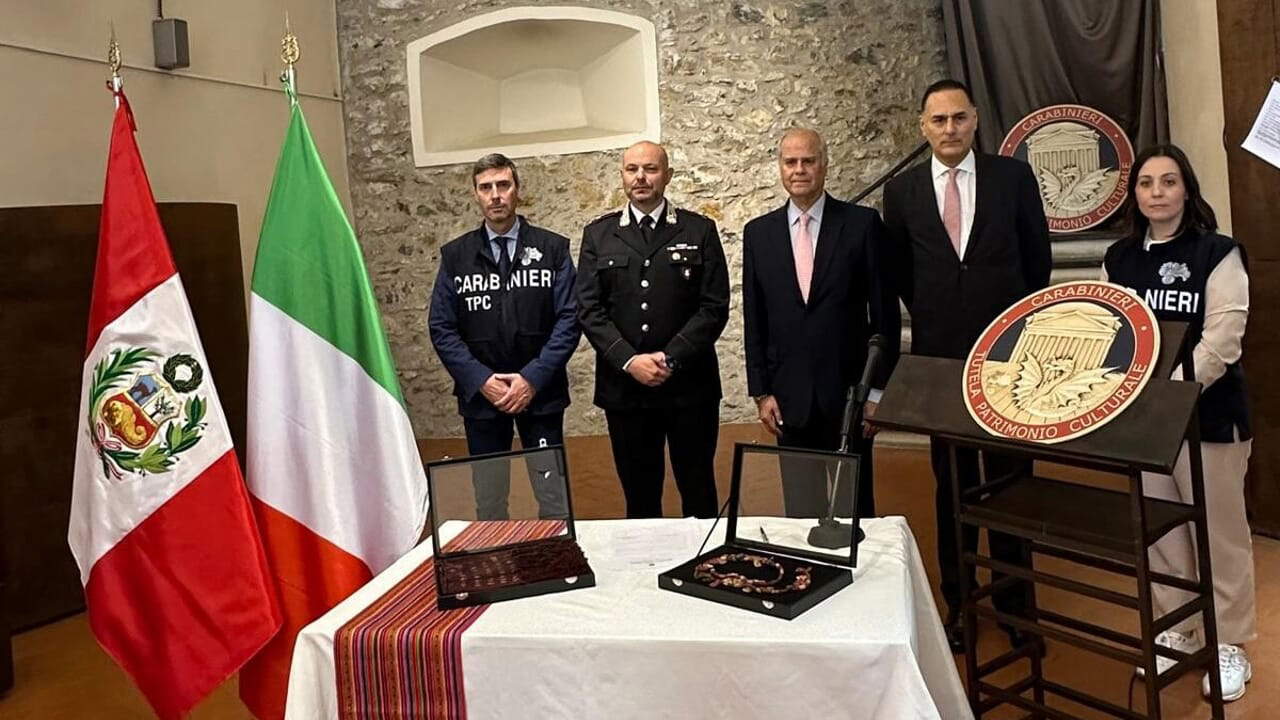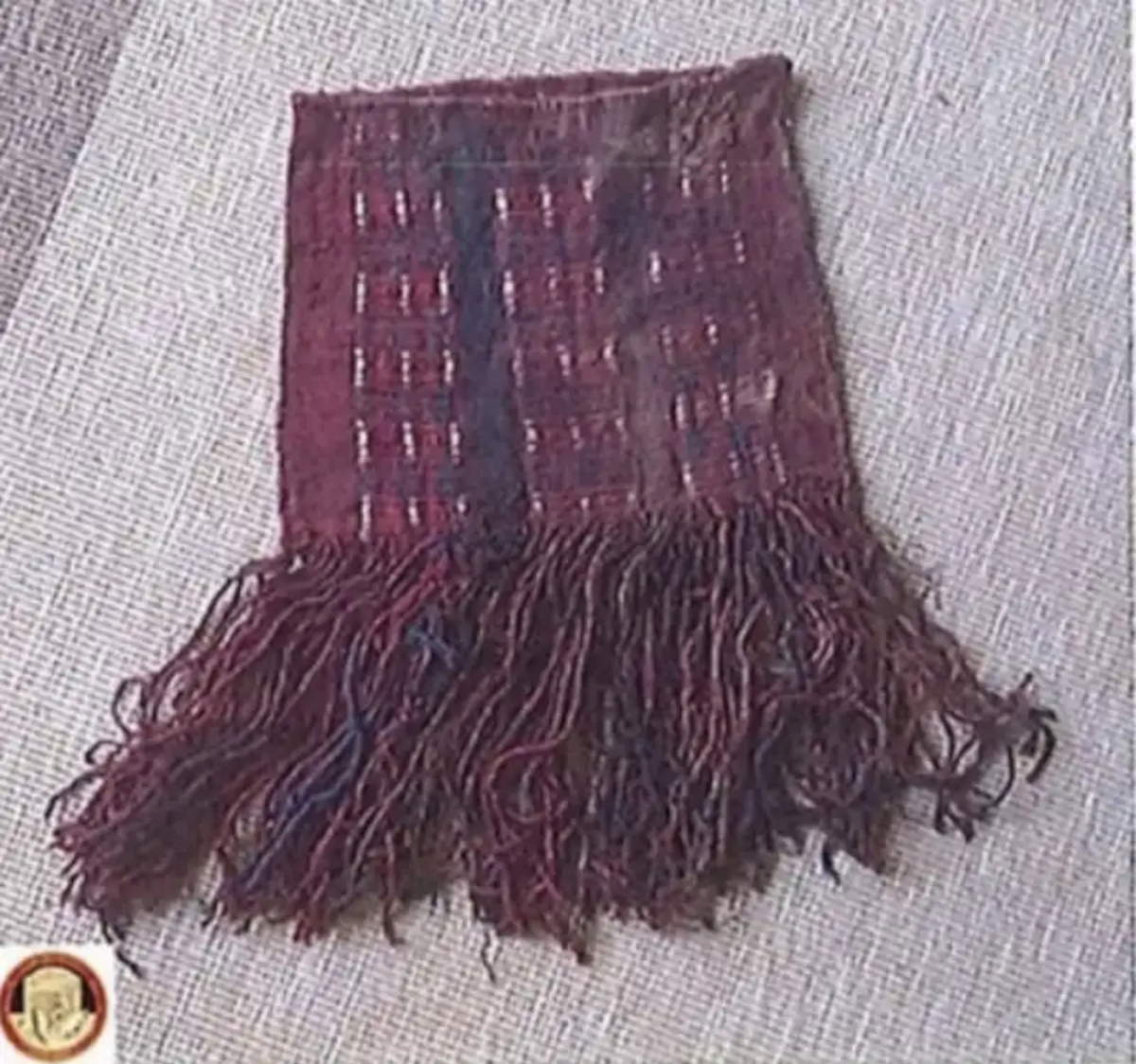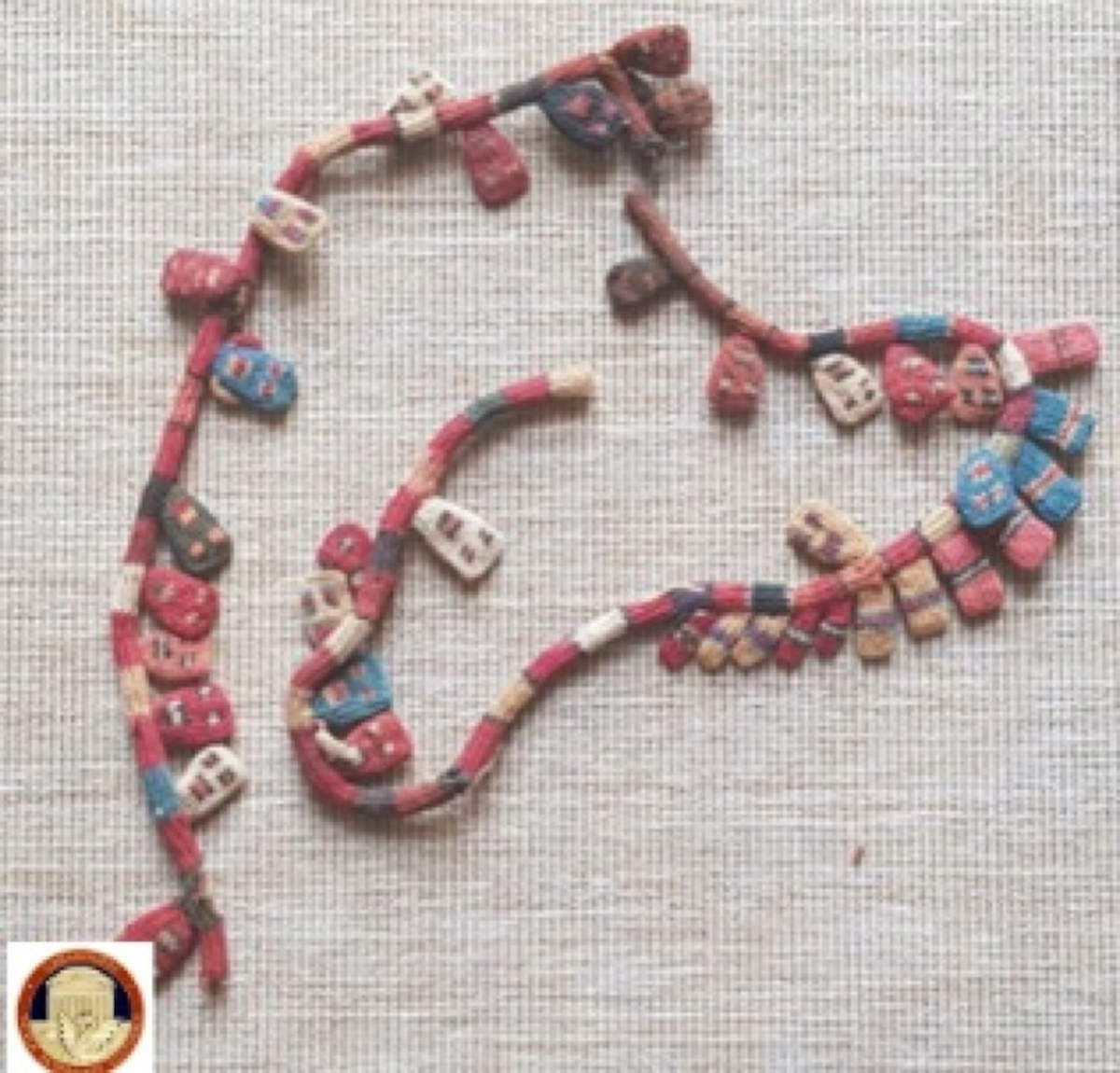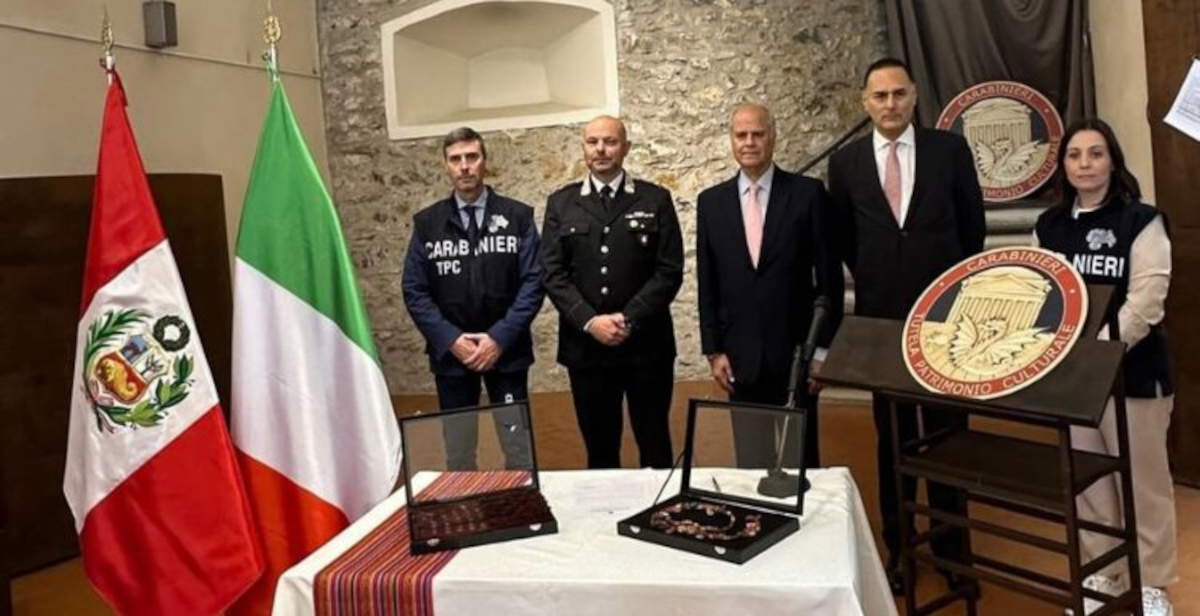A vacation in South America turned into an international case of cultural property restitution. It happened to a Genoese tourist who returned from Peru with two artifacts purchased out of curiosity, which turned out to be authentic pre-Columbian artifacts belonging to important civilizations in the Andean area. Their return was made official with a handing-over ceremony at Genoa’s Castello D’Albertis, in the presence of the ambassador of the Republic of Peru to Italy, Manuel José Antonio Cacho-Sousa, and carabinieri from the Nucleo Tutela Patrimonio Culturale. Among the “souvenirs” purchased by the woman were two fabric objects: a man’s handbag, traditionally used to hold coca leaves, and an edged fragment of fabric decorated with small stylized faces.


The analysis conducted by the military, in collaboration with experts in the field and Peruvian authorities, made it possible to accurately identify the origin and nature of the two artifacts. The fabric edging turned out to be part of a funerary mantle belonging to the Nasca culture, which flourished between 200 B.C. and 600 A.D. in the southern area of the Peruvian coast. The find, in particular, featured 26 small bifacial facets, an element typical of the cult of so-called “trophy heads,” a ritual practice linked to the religious and funerary beliefs of that civilization. The purse, on the other hand, has been attributed to the Chiribaya culture, which was active in the same geographic area but in later times, between 1000 and 1470 AD, during the so-called Late Intermediate Period of pre-Columbian history. The item, probably used by adult men for the ritual transportation of coca leaves, had been made using traditional textile techniques that are still recognizable, and was in excellent condition. The illicit provenance of the two items was established during the investigation. The artifacts had been illegally removed from their original context, allegedly as a result of clandestine excavations, and put into circulation on the international black market. The fact that they ended up in the hands of an unsuspecting buyer made it possible, paradoxically, to initiate a rapid restitution procedure, facilitated by the cooperation between Italian and Peruvian authorities.

 |
| Genoa, tourist returns from South America and discovers he has Nasca and Chiribaya artifacts: returned to Peru |
Warning: the translation into English of the original Italian article was created using automatic tools. We undertake to review all articles, but we do not guarantee the total absence of inaccuracies in the translation due to the program. You can find the original by clicking on the ITA button. If you find any mistake,please contact us.